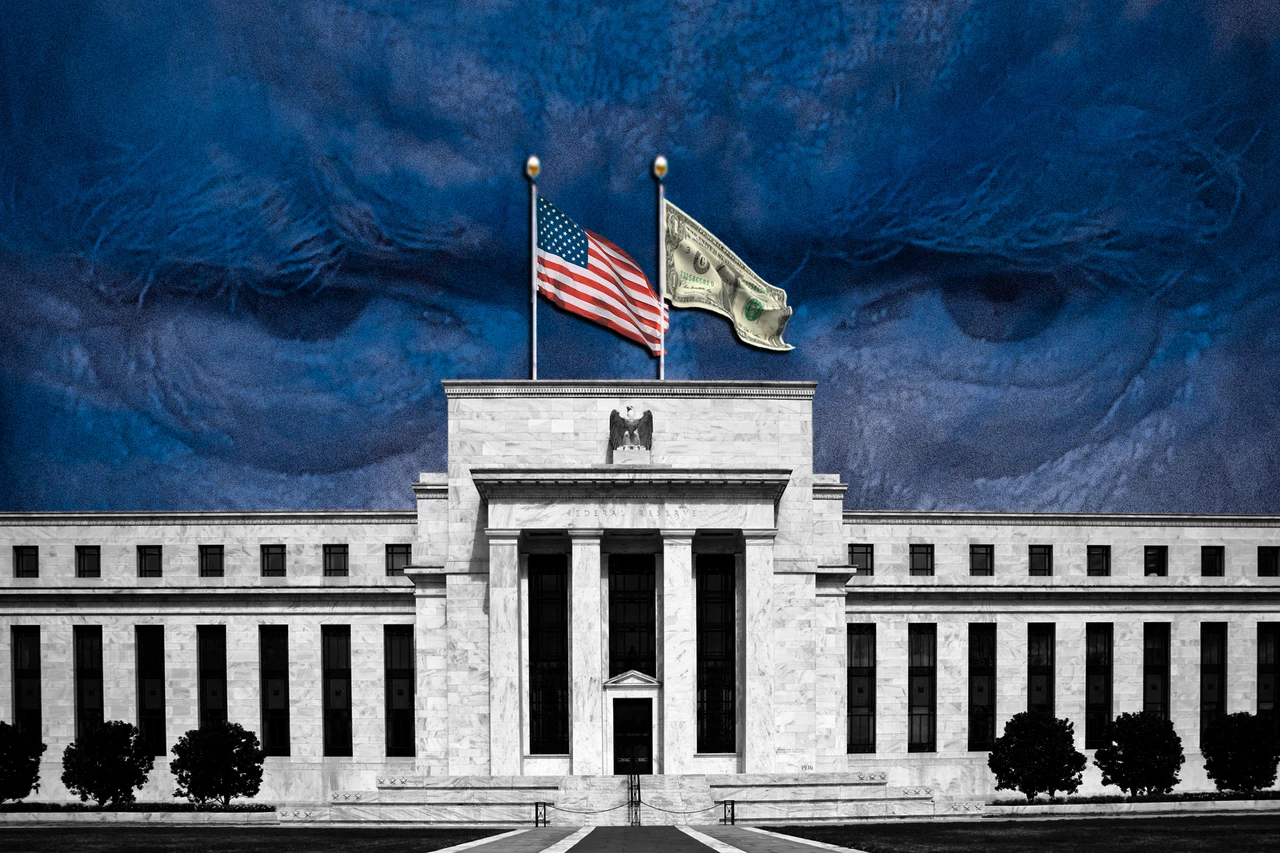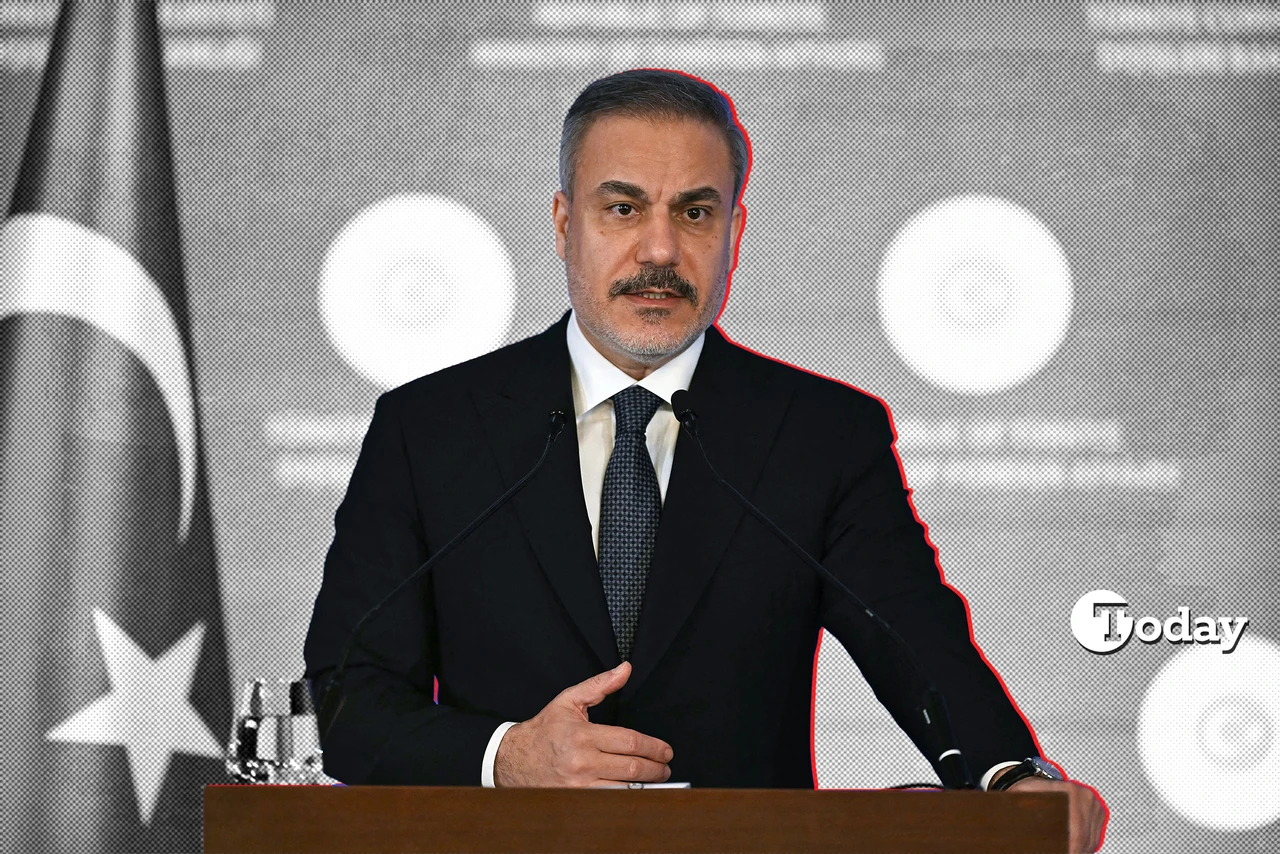Trump wants to devalue dollar—here is why
 Collage by Mehmet Akbas/Türkiye Today
Collage by Mehmet Akbas/Türkiye Today
Since Donald Trump’s re-election earlier this month, the U.S. dollar has soared as investors bet on his policies, including tariffs and tax cuts, driving its value higher. Yet, this surge starkly contrasts with Trump’s campaign pledge to weaken the dollar as part of his plan to revive American manufacturing.
The moment he took office, every issue he raised during his campaign became a matter of debate—centered on whether he can deliver on his promises, what the outcomes might be if he succeeds, and how he plans to achieve them. The story of the devalued dollar, which started with a contradiction, has become a subject of its own for further analysis.
Why weaker dollar
Trump has long expressed concerns about the dollar’s strength, or overvaluation. In July, he called it “a big currency problem” during an interview, specifically referencing its high value against the yen and the yuan.
These sentiments are not new; during his first term, Trump repeatedly urged the Federal Reserve to cut interest rates to bring down the dollar’s value. His vice president, JD Vance, has echoed these views, calling the dollar’s overvaluation “a massive subsidy for American consumers but a massive tax on American producers.” Vance argues that devaluing the dollar would make U.S. exports cheaper and more competitive on the global stage.
There is a general consensus among some economists and institutions that the dollar is indeed overvalued. The International Monetary Fund estimates the dollar’s value is inflated by about 10%, due to its role as the world’s reserve currency. This status creates global demand for dollars, artificially raising its value.
An overvalued currency might appear beneficial, offering cheaper imports and enhanced purchasing power, but it also brings notable drawbacks. The most significant is its toll on the U.S. manufacturing sector. A strong dollar inflates the price of American exports on the global market, undermining domestic producers and accelerating deindustrialization.
Both Trump and Vance contend that weakening the dollar could counteract these effects and the ongoing trend, often pointing to China’s deliberate currency devaluation as a strategy to preserve its export competitiveness.
Challenges to devaluation
Achieving a weaker dollar, despite Trump’s intentions, is far from simple. Ironically, many of his flagship policies—like tariffs and tax cuts—are likely to have the opposite effect, strengthening the dollar instead. Higher tariffs often drive inflation, prompting the Federal Reserve to hike interest rates, which in turn attracts investment into dollar-denominated assets. Similarly, tax cuts increase disposable income, potentially fueling inflation and further boosting the dollar’s value.
Complicating matters, other countries may respond to U.S. tariffs by devaluing their own currencies, effectively pushing the dollar even higher. This trend has already been evident since Trump’s re-election, with markets anticipating stronger tariffs and a correspondingly stronger dollar.
Adding to the challenge is Trump’s commitment to preserving the dollar’s status as the world’s reserve currency. He has described losing this status as akin to “losing a war” and even threatened 100% tariffs on countries that attempt to move away from the dollar. However, safeguarding the dollar’s reserve currency role inherently reinforces its strength, making deliberate devaluation an even tougher task.

How devaluation could be achieved
Despite the challenges, there are a few potential strategies to achieve a weaker dollar, though each comes with significant risks. One approach involves pressuring the Federal Reserve to cut interest rates or intervene in currency markets. However, the Fed’s operational independence means such pressure could erode market confidence and lead to financial instability, not that Trump cared, as he publicly pressured the Fed during his first term.
Another option is direct government intervention, where the U.S. could purchase foreign currencies to drive down the dollar’s value. This method, however, would require enormous financial resources, potentially in the trillions, and could strain fiscal stability through increased borrowing.
Capital controls, such as limiting foreign purchases of dollar-based assets or imposing taxes on them, are another possibility. While this could reduce global demand for the dollar, it would likely damage the U.S.’ standing as a global financial hub, with long-term repercussions for the economy.
A more collaborative approach might involve negotiating an international agreement akin to the 1985 Plaza Accord. In that case, major economies worked together to devalue the dollar through coordinated policy changes and market interventions. While effective at the time, replicating such a deal today would be far more complex due to the scale of global currency flows and strained relationships with key trading partners like China.
Road ahead
Efforts to maintain the dollar’s status as the world’s reserve currency add another layer of complexity to any devaluation strategy, as this role naturally reinforces its value. Just days before his re-election, Trump vowed to protect the dollar’s reserve currency status, emphasizing its strategic importance to the U.S. economy.
Achieving a weaker dollar would demand meticulous coordination on both domestic and international fronts, with potentially far-reaching implications for global financial stability. Whether Trump will actively pursue such measures remains uncertain, but the discussion highlights the delicate balance between advancing domestic economic goals and navigating the constraints of the global financial system.
What does it mean for developing markets?
A possible devaluation of the U.S. dollar would have good and bad sides of implications for developing economies like Türkiye. A weaker dollar could reduce the burden of dollar-denominated debt, for example, easing repayment pressures and potentially improving fiscal stability. While a weaker dollar could attract foreign investment to Türkiye, it might introduce volatility in global markets, affecting Türkiye-like countries’ export-dependent economies.
Carmen Reinhart, once selected for Barron’s 100 Most Influential Women in U.S. Finance, has frequently analyzed how fluctuations in the U.S. dollar affect emerging markets. Her research highlights that a stronger dollar typically hampers growth in these economies. This is largely due to the “income effect,” where an appreciating dollar drives down commodity prices, shrinking real incomes and dampening domestic demand in emerging markets.
While the move could offer relief to developing economies and boost American manufacturing, it risks introducing financial instability and geopolitical challenges. Whether Trump’s administration will overcome these hurdles remains uncertain, but its impact will undoubtedly shape the global economic landscape in the years to come.



